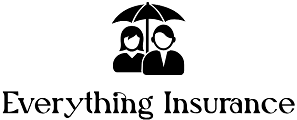In this guide, we are going to look at what Liability insurance entails, and factor to consider when choosing any policy on it.
What is Liability Insurance?
Liability Insurance provides coverage for injuries or damages which an individual or business person is legally responsible for. This encapsulates a wide range of scenarios such as the damage of property, bodily injury or legal expenses emanating from lawsuits.
Importance
A business person or a professional who does not have adequate liability coverage stands at risk of subsequent financial losses in such cases as an accident, lawsuits or negligence claims. The truth is, Liability coverage is a safety net that offers financial protection from unforeseen circumstances.
Types
There are numerous types of Liability Insurance each tailored to specific industries and needs. They include:
General Liability Insurance
The General liability coverage is that kind of insurance that addresses the common risks businesses face. Such risks as advertising injury, bodily injury and property damage are being covered to ensure that the business owner does not fall prey to third parties who could lay claims for wrongdoings and negligence. Its coverage cost typically addresses settlements and judgements within the limits of the policy.
Professional Liability (the errors and omissions of Insurance)
The Professional Liability coverage is also known as the errors and omissions (E&O) Insurance. It helps to protect professionals from claims that the insured party failed to meet with the complete execution of professional services which has resulted in Financial harm to the third party or client. E&O’s coverage involves settlements and legal costs.
Product Liability Insurance
This type of insurance protects businesses from liabilities arising from the use of a product manufactured and sold to the public. Its coverage entails claims of bodily damage or property damage that came to be as a result of the defects in the product, lack of proper warnings inadequate instructions or any hazard associated with the product. The Product Liability Insurance (PLI)is the backbone of companies and businesses when it comes to the aspect of lawsuits, settlements and covering legal charges. Manufacturers, wholesalers and even retailers are advised to secure product Liability Insurance to have coverage to mitigate unforeseen financial risks associated with product-related claims.
Factors to Consider When Choosing Liability Insurance
Coverage Limit
Checking the coverage limit of liability insurance is very important. This is because inadequate coverage can pose a danger to the insured in the future. Therefore, the individual or business person must ensure to pay for those with adequate coverages that will cover a wide range of unforeseen circumstances which will serve as much-needed help in the future.
Types of Liability Coverages
The business owner or individual should ensure that the insurance policy covers a wide range of Liability such as General Liability, Professional Liability, Product Liability and the like. This depends on an individual’s business needs.
Industry Specific Coverage
Looking for tailor-made Coverage that is in line with your industry is very essential because it helps to address specific requirements and risks.
Deductibles
Deductible amounts and their efficacy on premiums must be evaluated including out-of-pocket expenses.
Claims history
You must review the insurer’s claim records, and go through customers’ reviews and testimonies so you can tell if they are truly efficient in handling claims.
Reputation and Financial Strength
It is wise that you choose an insurer with excellent track records of financial stability to fulfil claims.
Exclusions and Limitations
Ensure to have a perfect understanding of the liabilities that are not included in the policies and any limitations applicable.
Understanding Liability Coverage Limits and Deductibles
It is essential to have an understanding of Liability coverage Limits and Deductibles because it helps you make the right choice when it comes to picking the best Liability insurance tailored to your specific needs and budget.
Liability Insurance Limit
Liability insurance Limit is the maximum amount your insurance provider will pay you for covered claims over a policy period. For instance, if your policy has USD 2 million in Liability Limit, for covered claims, your insurer will cover up to that amount. This simply means that higher limits equate to higher Premiums which offer greater protection.
Deductibles
Deductibles on the other hand refers to the amount you must pay out of pocket before your insurance coverage is activated. There are certain types of coverages applicable to deductibles in Liability Insurance. However, it is paramount to take note that choosing higher deductibles will lower your premium but in the event of a claim, your financial responsibility will increase. Conversely, a lower deductible will mean a higher premium but fewer out-of-pocket expenses when it comes to filing a claim.
To conclude, the subject matter of Liability coverage can be summarized as the art of safeguarding both the finances of the company and that of the individual against uncertainties which chiefly includes financial losses. Its goal is to protect against future legal claims spurn by third parties who are known to cite both bodily and property damage. Its coverage options help mitigate against futuristic risks by certifying security and the maintenance of individual or company’s financial well being.





